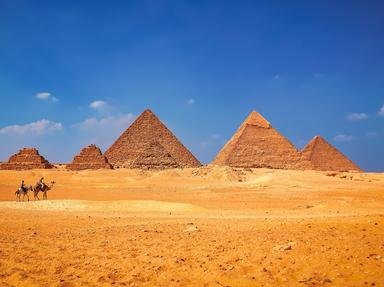Quiz Answer Key and Fun Facts
1. Which of the following pharaohs is given credit for making Memphis the first capital of a united ancient Egypt?
2. During which period in Egyptian history was Memphis the capital?
3. Why is it believed that the site of the ancient city of Memphis was chosen to be the first capital?
4. Which god in the Egyptian pantheon, the god of craftsmen and architects, was the patron of Memphis?
5. Ancient Memphis was a huge city, and therefore, had several necropoleis sites. Which site, however, contains an ancient structure that was the first of its kind?
6. At which temple in ancient Memphis was the living manifestation of the city's patron deity worshiped?
7. Ancient Memphis experienced a temporary decline in power when the capital of Egypt was moved to which city?
8. Which group of invaders to Egypt pillaged and looted ancient Memphis, relocating artifacts to their capital of Avaris?
9. It appears that the ancient city of Memphis experienced a resurgence of its importance during the Nineteenth Dynasty under the reign of which great pharaoh?
10. The ancient city of Memphis is part of a thriving modern city today.
Source: Author
ponycargirl
This quiz was reviewed by FunTrivia editor
gtho4 before going online.
Any errors found in FunTrivia content are routinely corrected through our feedback system.


